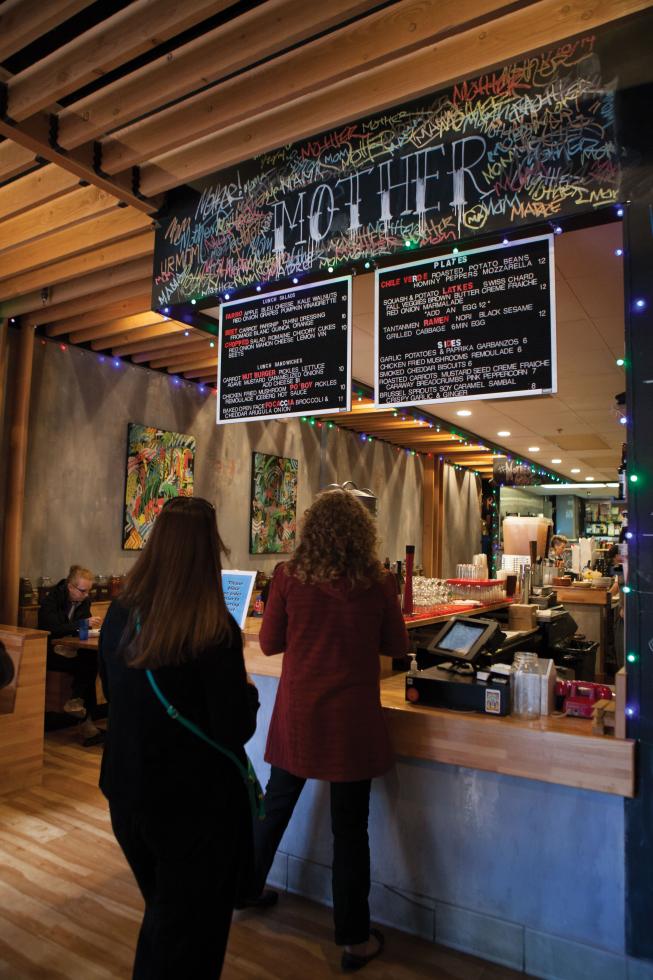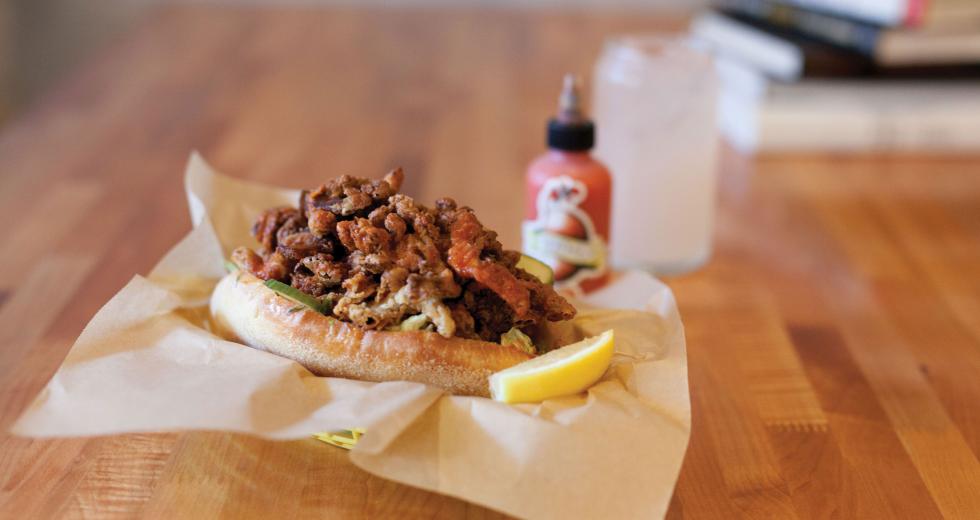California’s deep agricultural roots are inextricably entangled in the history and progress of American cuisine. From the California roll to the fortune cookie, the California burger (which means lettuce, tomato and onion in the Midwest) and the Mission burrito, many casual concepts of what American food is were conceived here. In haute cuisine, Alice Waters of Chez Panisse in Berkeley, along with Thomas Keller in Napa, defined California slow food for decades. Slow food then matured into the national trend of farm-to-table dining — or, as K Street likes to call it, farm-to-fork.
The seemingly natural confluence of these trends is “fast-casual,” an amorphous 90s euphemism for fancy fast food. Its primary tenets: casual, affordable, fast (which can mean anything from just-in-time to 15 minutes) — sometimes local, sometimes organic or free range, but (almost) always freshly cooked by a human. In a lot of ways, it’s just fast food but with an element of value-added conscientiousness.
Mother, located in downtown Sacramento, uses locally grown
ingredients; the wait for food can be as little as 4 minutes.

On the East Coast it looks like Chick-fil-A and the more vocal Danny Meyers’ Shake Shack — the latter of which, as the jewel of America’s “better burger” crown, holds food awareness events and has consumer education as part of its publicly traded mission. Out West it looks like Amy’s Drive Thru, the so-called “world’s first organic drive-through” near Petaluma, or Sacramento’s Mother or, coming soon, the Golden 1 Center.
Farm-to-table itself is a concept as old as the sun. Until the dawn of the refrigerated rail cars bringing Salinas lettuce across the Great Plains (hence the California burger), farm-to-table was simply how food worked. Even today, it is argued by a loquacious few that all food starts on a farm and ends up on a table. But to the slow food movement, farm-to-table is a throwback to a time before food was manufactured, when wood-fired stoves stewed for days and spices filled the air with romantic notions of what food can really be to a bustling metropolis. To many ambitious, but more grounded, modern chefs, it’s about using local seasonal ingredients to minimize oil consumption and “food miles,” helping ensure freshness and traceability while maximizing quality and contributing as much as possible to the local economy.
Mother, a vegetarian fast-casual that serves a counter-service lunch (and a sit-down dinner to the later, sparser Midtown crowd), depends on up to 25 local farms to supply their kitchen, depending on the season. As Lisa Thiemann, co-owner of Mother with Ryan Donahue, says bluntly, “This is not a health food restaurant. We are just trying to showcase the incredible bounty of local farms.” To bolster the point, their signature sandwich is a chicken-fried mushroom po’boy. With their house ancho chile sauce, it is savory with crispy, juicy textures and a piquant finish. Raincheck on the salad.
In a lot of ways, it’s just fast food but with an element of value-added conscientiousness.
One of their suppliers is Watanabe Farms, a fourth-generation Sacramento farm. Clark and Heidi Watanabe hand harvest and deliver directly to many restaurants in the city, and are emblematic of Sacramento’s long tradition of farm-to-table dining. But it is still, after generations, a niche market, and scaling up operations to meet rapidly growing demand might not be on every farmer’s plate, nor every chef’s.
“We really like small operations,” says Donahue.
But small operations provide logistical challenges that have long been solved by larger distributors and chain stores, things as simple as storage capacity. “We bring in a massive amount of product everyday and many nights 86 items,” Ryan says, both because he can’t bring in more food than the restaurant can hold at the right temperature and small farms often have a limited supply.
Speaking of limited supply, the truest and biggest test of the region’s farm-to-table capacity is presently ramping up under the helm of one of Sacramento’s long-time stalwarts of farm-to-fork dining, Chef Michael Tuohy, formerly of Grange and more recently of Block Butcher Bar and LowBrau.
His new venture may be unique in its scope since, well, ancient Rome. “Farm-to-fan,” Tuohy says with a wry smile, “that’s what they’re calling it.”
Tuohy’s mission is to provide 18,000 Kings fans at the new Golden 1 Center with food and libations with at least 90 percent of ingredients sourced within a 150-mile radius. “I think it is just an incredible opportunity, and I don’t know that it would be possible to even consider doing it anywhere else,” he says.
It is difficult to overstate either the project’s potential impact on local agriculture or its complexity. With meat from a multitude of suppliers, produce from dozens of local farms, beers from local brewers and the obligatory local wine, local products from start to finish will be on sale to the most diverse audience of people anywhere in the region.
Michael Tuohy, executive chef, the Golden 1 Center. (photo:
Debbie Cunningham)

Really, it’s a timing issue: A locally conscious establishment is limited in several ways that many mainstream consumers don’t find acceptable: no tomatoes in the winter, no guacamole in the fall, no citrus in summer.
But Tuohy likes to talk about nachos. He’s planning to use four different kinds of cheese from Petaluma Creamery (80 miles from the stadium) for a nacho cheese sauce made from scratch, often daily, in a real kitchen. “You just don’t see it done like that,” he says. As for the logistics, Tuohy says that they will have a “big central kitchen, I mean really big.”
That central kitchen will be a stadium unto itself, a menagerie of moving parts large and small, hot and cold, prepping and cooking fresh, local food in an elaborate just-in-time system which Tuohy says is still in development. That kitchen will support eight concession stands on each of the two floors, as well as kiosks for snack items (like locally grown and popped popcorn), and extensive fine dining and buffet options for the boxes and executive lounges. The concession stands are modeled after existing Sacramento businesses. Following an extensive search, several restaurants gave their recipes to Tuohy and his team under licensing agreements that could be worth a substantial amount of money and exposure. Those recipes are now being tweaked to fit the unique demands of feeding 18,000 people, give or take, all at once.
The influence of the Golden 1 Center kitchen will likely be national. It represents something more accessible than slow food, and more refined than the nuclear orange goop we associate with stadium cheese. Yet, while the consumer adjustments necessary for this California vision of fast-casual to achieve culinary watershed are fewer in the Capital Region than almost anywhere else in the world, as anyone can tell you, California burgers are delicious year-round.
Editor’s note: The original version of this story mistakenly referred to Amy’s Drive Thru as Amy’s Drive-In. We regret the error.




Comments
Fast casual on the east coast isn't Chick-fil-A. It's a *lot* healthier: Pret a Manger, Sweetgreen, Vapiano, Le Pain Quotidien, Chopt...